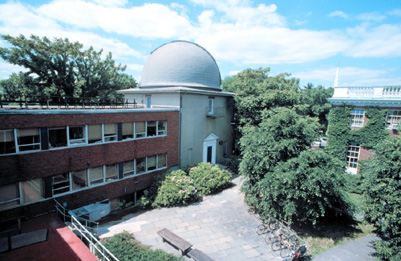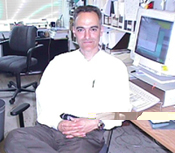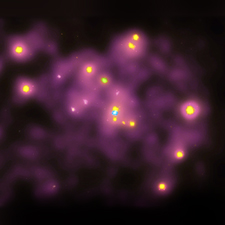An overview of the Chandra mission and goals, Chandra's namesake, top 10 facts.
Classroom activities, printable materials, interactive games & more.
Overview of X-ray Astronomy and X-ray sources: black holes to galaxy clusters.
All Chandra images released to the public listed by date & by category
Current Chandra press releases, status reports, interviews & biographies.
A collection of multimedia, illustrations & animations, a glossary, FAQ & more.
A collection of illustrations, animations and video.
Chandra discoveries in an audio/video format.
Disclaimer: This material is being kept online for historical purposes. Though accurate at the time of publication, it is no longer being updated. The page may contain broken links or outdated information, and parts may not function in current web browsers. Visit chandra.si.edu for current information.
Chandra People: Behind the Scenes, Continued
June 2, 2000 ::

The Chandra X-ray Center provides researchers with support that includes data processing and a science data archive. The Center is operated for NASA by the Smithsonian
Astrophysical Observatory and is situated on the campus of Harvard University.
|
In our continuing look at Chandra people, we focus on astrophysicists Michael Garcia and Paul Green of the Chandra X-ray Center. Michael Garcia's areas of
research interest include black holes and neutron stars. Paul Green focuses on quasars, gravitational lenses and white dwarfs.
 Dr. Michael Garcia Dr. Michael Garcia |
Dr. Michael Garcia
Q: What are your areas of research interest (i.e. stars, black holes, galaxies, clusters)?
A: Black Holes and Neutron Stars.
Q: Are you using Chandra images in your research?
A: Yes, many!
 Q: If so, Which image(s)?
A:
Q: If so, Which image(s)?
A: Images of M31, The Andromeda Galaxy. In particular the views of the central supermassive black hole.
Q: How are these images changing your particular area of research? (Give an example.)
A:HST had found that there was a supermassive black hole in the center of M31. Chandra found that it was 'cool', ie, that it's temperature was lower than other black
holes. This was a totally unexpected result. It also raises the question: are the supermassive black holes in other galaxies also 'cool'?
Q: What would you suggest for future X-ray astronomy missions?
A: Constellation - the X-ray equivalent of KECK, is a great mission. Chandra has superb mirrors, but they are relatively small.

Paul Green |
Paul Green
Q: What are your areas of research interest (i.e. stars, black holes, galaxies, clusters)?
A: Quasars, gravitational lenses, white dwarfs
Q: Are you using Chandra images in your research?
A: Yes!
Q: If so, Which image(s)?
A: These are all quick snapshots of Broad Absorption Line Quasars:
- FIRST J0840+3633
- Q0842+3431
- LBQS 1235+1807B
- Q1246-0542
- UM 425
- Q0059-2735
- Q0135-4001
- Q0254-334
- IRAS 07598+6508
- SBSG 1542+541
while this is a binary quasar, where we are searching for a foreground optical-dark lensing galaxy cluster!
Q: How are these images changing your particular area of research? (Give an example.)
A: BAL QSOs might BE the long-sought Type II QSOs, and may also be the adolescent phase of quasar growth, when the radiation from near the black hole begins to blow away
surrounding gas and dust.
The discovery of dark clusters could revolutionize cosmology!
Q: What would you suggest for future X-ray astronomy missions?
A: High spatial and spectral resolution, large collecting area, higher apogee, and improved acronyms.
Disclaimer: This material is being kept online for historical purposes. Though accurate at the time of publication, it is no longer being updated. The page may contain broken links or outdated information, and parts may not function in current web browsers. Visit chandra.si.edu for current information.








